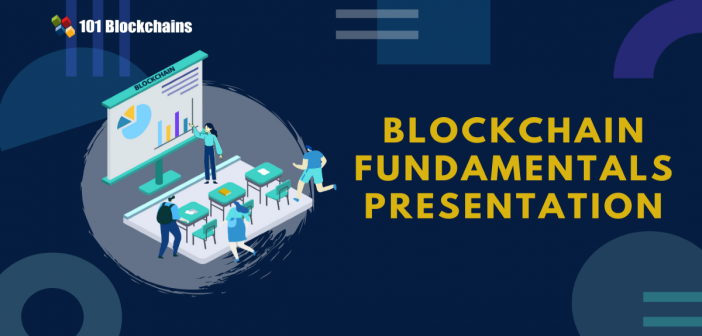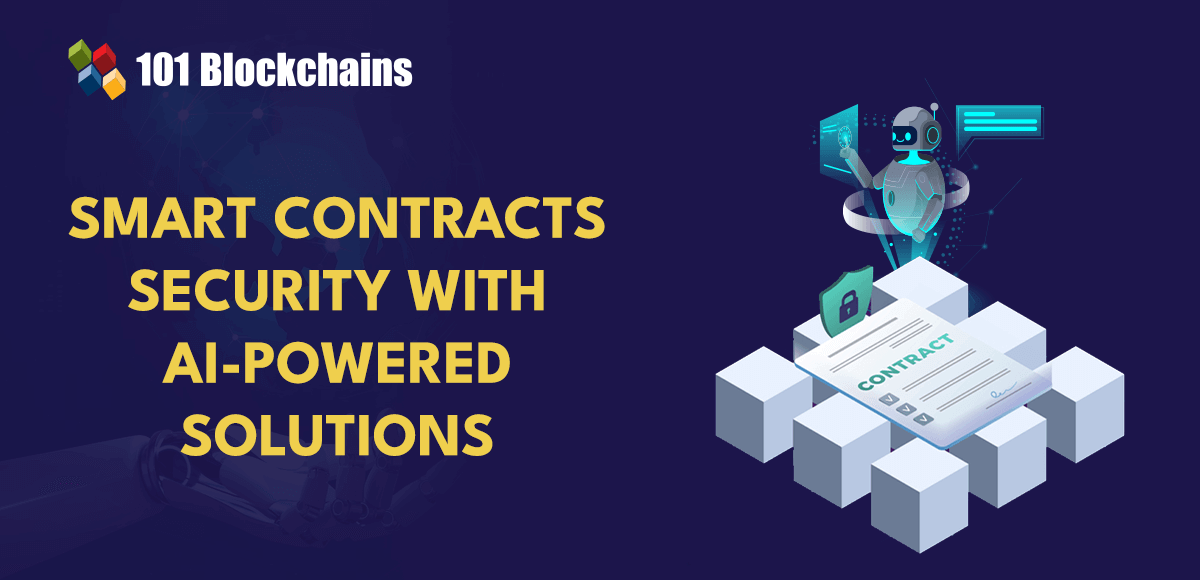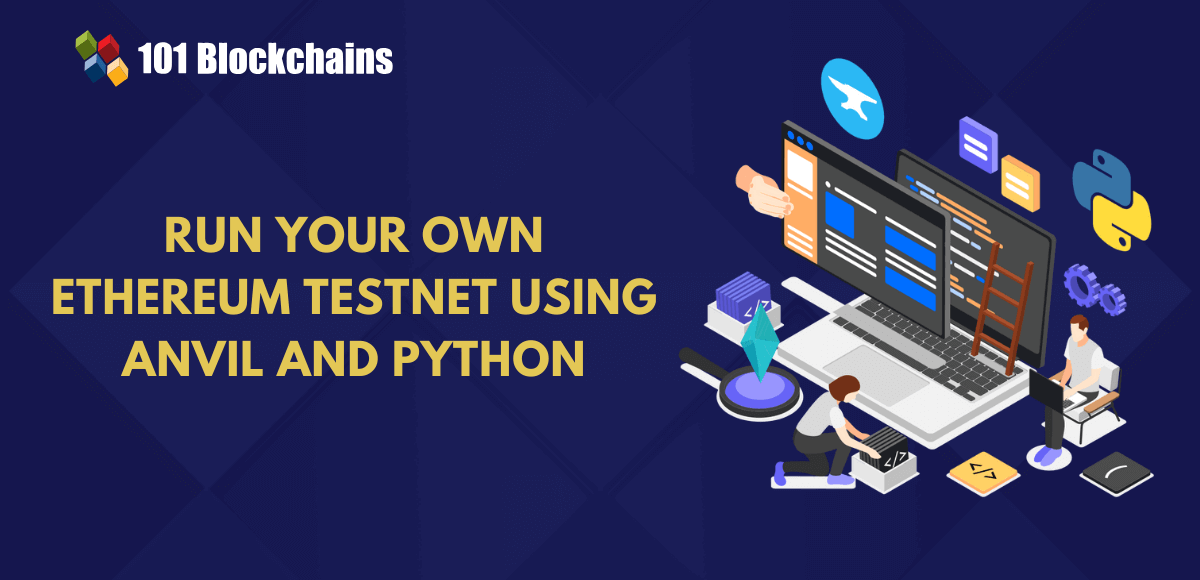Aspiring to learn blockchain? Looking for an interactive way to learn the basics of blockchain in an easy manner? If yes, you are in the right place. A number of blockchain beginners’ guides out there over the internet may confuse you to find the best one, so here we will cover the blockchain fundamentals presentation so present a quick introduction to blockchain.
This blockchain guide will ensure that you can learn the most important blockchain fundamentals thing using the following PowerPoint blockchain presentation. Each blockchain slide or set of slides covers a topic with an image and ensures that you get the best introduction to blockchain.
Excited to learn about the fundamentals of blockchain technology, Checkout presentation on Blockchain Fundamentals – Top Rated for Beginners
Note: If you are creating a blockchain fundamentals pdf, we encourage you to use the slides available here. This will help us reach more audience who wants to know about blockchain fundamentals.
Blockchain Fundamentals Presentation
The blockchain fundamentals presentation for beginners contains 25 blockchain slides. So, without any delay, let’s get a grasp on the blockchain basics through the blockchain presentation pdf. Let’s get started.
We invite you to embed this presentation in your website by copying this code:
Please include attribution to <a href='https://101blockchains.com/'>101blockchains.com</a> with this graphic. <a href='https://101blockchains.com/blockchain-fundamentals-presentation/'> <iframe style="border: 1px solid #CCC; border-width: 1px; margin-bottom: 5px; max-width: 100%;" src="//www.slideshare.net/slideshow/embed_code/key/bcVFqYjOcir5Sv" width="595" height="485" frameborder="0" marginwidth="0" marginheight="0" scrolling="no" allowfullscreen="allowfullscreen"></iframe>; </a>
Blockchain Introduction Presentation- Slides Description
Let’s move ahead to have an overview of what we’ve covered in each slide of the Blockchain Fundamentals presentation.
Slide 1: Title
The first slide is the presentation of the title – Blockchain Fundamentals (Blockchain Made Easy). You can also find the 101Blockchains logo, representing that the presentation has been created by the 101Blockchains.
Get familiar with the terms related to blockchain with Blockchain Basics Flashcards.
Slide 2: Abstract
In this slide, we will be listing the important topics that we are going to cover in the blockchain presentation. The topics will include the following.
- What is blockchain technology
- Must know blockchain terms
- Smart contracts
- Blockchain digital transformation
- Impact of blockchain on the world
Slide 3: What is Blockchain?
The blockchain is defined as an open ledger that offers decentralization to the parties. In addition, it also offers transparency, immutability, and security. It has many features including being open, distributed, ledger, P2P, and permanent.
Blockchain term was first introduced in the white paper of Bitcoin in 2009 by Satoshi Nakamoto. From there, it has come a long way as more and more organizations are interested in it. Right now, Bitcoin is on its way to implementing a lightning network and other advanced features.
Build your identity as a certified blockchain expert with 101 Blockchains’ Blockchain Certifications designed to provide enhanced career prospects.
Slide 4: How Does a Blockchain Work?
The working of blockchain is straightforward. As it is a peer-to-peer network, a user needs to start a transaction. Once done, a block is allocated to the said transaction. The transaction block is also broadcasted to the network, and all the nodes in the network get the said information. The block is then mined and validated. It is also added to the chain, followed by a successful transaction.
Slide 5: Remarkable Benefits of Blockchain Technology
Blockchain technology is feature-rich technology. There are so many benefits of Blockchain Technology. For example, it lets the user do a faster settlement compared to traditional methods. It is also immutable and more secure. When compared to a traditional network, blockchain technology is more capable and has improved network capacity. With decentralization built-in, it can be used to build a shared and distributed blockchain.
Slide 6: Public vs Private Blockchain Network
The slides discuss the difference between public and private blockchain network. The main difference between them is how they function. The public blockchain network is permissionless whereas the private blockchain is permissioned one. This means that the public blockchain is an open network that is not controlled by anyone. Anyone can access it. The private blockchain, on the other hand, is permissioned which means that there is an authority that manages who can use the network.
Slide 7: Centralized vs Decentralized vs Distributed Network: An Overview
There is a vital difference between centralized, decentralized, and distributed networks. That’s what the slide is all about.
- Centralized: All the nodes come under a single authority
- Decentralized: There is no centralized authority and everyone can take part in the network.
- Distributed: Independent nodes interact with each other. Also, each node is interconnected.
Slide 8 and 9: Top Blockchain Terms
It is hard for a beginner to know blockchain terms and this can easily make them confused. This slide list 10 important must know blockchain terms out there. For example, it covers bitcoin, airdrop, dApp, ICO, and others.
As a beginner, you must go through the most common Blockchain terms and definitions to learn them better. Here are the top Blockchain definitions you need to check.
Slide 10: Smart Contract Explained
Smart contracts are similar to a legal document and create terms between two parties. The two parties that are dealing with using smart contracts. Also, the contracts use public ledger for storage purposes. Smart contracts are triggered when a condition is met, and are completely autonomous.
It just executes based on the code that defines the pre-condition. To make sure that they work as intended, they are analyzed and managed by regulators. It is also helpful in understanding trends and predicts market uncertainties.
Slide 11: How do Smart Contract Work?
Smart contracts work between two parties. It is used to do buyer and seller matchmaking. Furthermore, it can be used for transactions. Banks and other institutes can use smart contracts to receive assets and distribute them.
The three key features of smart contracts include registered, automated settlement of contracts and there is no need for the third party.
Slide 12: Advantage of Smart Contracts?
The slide discusses the advantages of smart contracts. The few advantages include total transparency, no paperwork, total transparency, trustworthiness, guaranteed outcomes, and so on.
Curious to understand the complete smart contract development lifecycle? Join Yearly/Yearly+ Plan and get free access to the Smart Contracts Development Course Now!
Slide 13: Disadvantages of Smart Contracts
Smart contracts are not free from disadvantages. It does have some disadvantages. A few of the major disadvantages include error, confidentiality, and rouge contracts.
Smart contracts are created by humans, so are open for human-errors. Also, they are not 100% confidential. It can leak some vital info which can be read by a 3rd party. Not only that, but there are also rouge contracts that can act like a real one and make fraud possible.
Slide 14: Smart Contracts Use Cases
There are many uses cases for smart contracts. They can be used in different verticals, and can also be used to make things efficient. Some of its main uses cases include trading activities, supply chains, copyright protection, real estate market, government voting, and so on. It also has very useful use cases in Internet-of-things(IoT) where it can help protect the network as well.
Slide 15: Is the Blockchain Overhyped?
Is the blockchain overhyped? It is one of the biggest questions that need to be addressed. The general population doesn’t understand what blockchain has to offer. This leads to assumptions and many calling it overhyped. Right now, the blockchain technology is not yet one decade old.
We have already crossed the disappointment phase and are moving towards a better implementation in the future. Bitcoin, for example, will see new updates soon. Other blockchain technologies are also innovating at a rapid pace.
Not sure how to build your career in enterprise blockchains? Enroll in How to Build Your Career in Enterprise Blockchains course now!
Slide 16: 9 Verticals of Blockchain Transformations
Currently, the whole industry is going through a blockchain transformation. You can see the impact of blockchain everywhere. That’s why the slide shares the nine verticals of blockchain transformation. They include the following:
- Technology
- Law and Crime
- Government Service
- Finance
- Human Rights
- Entertainment
- Media
- Transportation
- Contracts
The IT industry has already experienced the Digital transformation with Blockchain Technology. Check more about the Blockchain Digital Transformation.
Slide 17: 2017-2018 Leading Sectors
There are also many sectors that are leading in the blockchain technology implementation. The two sectors that are leading the most include Fintech and supply chains. However, that’s not all as there are other sectors that are slowly but steadily adopting blockchain technology including healthcare, shipping, retail, insurance, and mining.
With time, we will see almost every sector to use some form of blockchain technology. Few sectors will see better implementation due to better suitability than other sectors as enterprises are very keen on implementing blockchain.
Slide 18: Web 3.0: The Successor of Web 2.0
Blockchain will also begin Web 3.0 which is the 3rd generation of the internet. The internet will take advantage of the blockchain network and bring a truly decentralized network that is way more advanced than what we have right now.
The current web is more focused on server-based databases and hence provides limited functionality. The new internet will be more focused on users which means that it will be better connected and offer a secure platform for everyone out there.
Slide 19: Web 3.0 Benefits
This slide continues with the topic of Web 3.0 and lists Web 3.0 benefits. As discussed earlier, Web 3.0 offers better functionality and features. It will be permissionless which means that there will be no centralized authority controlling it.
It will also be free from any monopoly and will also provide tons of privacy to the users. The network is secure, and the data ownership stays with the end-users who can keep it to themselves or sell it to the media companies. Web 3.0 will also be ubiquitous and offer a semantic web.
Slide 20: Remember: Centralized vs Decentralized Internet
The core difference between centralized and decentralized networks is the absence of central authority. It is a decentralized internet that has its unique data flow, new business models, and dApps. The slide also presents the difference in a visual way.
Slide 21: Web 3.0 Ecosystem
In the end, we will get a Web 3.0 ecosystem will be better and offer a wide variety of services. The slide list the different components of the ecosystem and gives you a glimpse of what you can expect from Web 3.0. You will also find each component or service with an example that gives you a glimpse of what to expect from Web 3.0.
Slide 22: Bonus #1: Blockchain vs Database
The blockchain is decentralized which also stores data. However, it is different from databases. In this slide, we discuss the blockchain vs. database topic. The four categories in which they differ include writing access, cost, integrity, and trust. The major difference is, of course, the absence of a centralized authority. Data written on the blockchain is also immutable which in turn provides integrity. The database, on the other hand, offers you CRUD operation. There are also significant differences that are covered in the slide itself.
Slide 23: Bonus#2: Different Types of Tokens
In this slide, we discuss different types of tokens. They include currency, asset, utility, and equity tokens. Each of these tokens is then defined with the Web 3.0 examples.
Final Words
This leads us to the end of the blockchain fundamentals presentation. If you are looking for a blockchain presentation ppt, then you can download the presentation and save it on your system. These Blockchain Fundamentals slides not only cover the introduction to the blockchain but also introduce the reader to different new concepts, ideas, and information.
You can also download the blockchain presentation pdf and use it as a reference for learning further advanced topics. Furthermore, you can share the blockchain slides pdf in your circle. As a beginner, we’ll recommend you to enroll in our Blockchain Fundamental Course to lay the foundation of a bright Blockchain career.








2 Comments
Excellent BC stuff.
Well explained.
Question: From where and how do I download the ppt for this deck?
Thanks
Bhupendra Patel
Thanks, you can donwload it directly from the slideshare